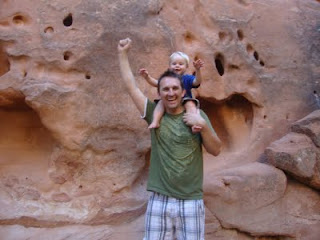I've been working on revisions of my current WIP, The Unhappening of Genesis Lee, for a month and a half now. Because I did so much plotting ahead of time, I haven't needed as many large-scale changes to this book plot-wise, which is awesome. Of course, that doesn't mean the plot is perfect. My individual scenes, especially, need to be tighter, more focused, and to lead naturally from one to the other. I tried out a new method to make this work, and it has been one of the most helpful revision tools ever.
Have you ever heard scenes referred to as action/reaction types, or scene/sequel types (same thing, different terms)? I had, but I never knew how it really worked. Basically, every scene in your book will be either an ACTION (scene) or REACTION (sequel), and the scenes should always alternate. (Action -->reaction-->action, etc.) There are some handy graphics here so you can get the big picture.
An ACTION scene has the following components: a goal, a conflict, and a disaster. The goal, obviously, is your character's need/want/objective for that specific scene. The conflict is what gets in your character's way. The disaster doesn't always have to be a disaster. Either your character doesn't get what they want (if they do, the book is over), or they DO get what they want, but something else happens-- they learn they need something else, or the thing they get isn't what they really wanted, etc.
After the initial reaction in the reaction scene (I know, confusing), comes the dilemma-- the disaster in the last scene created a problem, so now what? Your character needs to make a decision, which leads to an action. Wait, an action? As in an action scene? Fancy that! We've come full circle.
My approach to this was to take out a notebook and go through my chapters one by one, making sure the cycle flowed, and writing out each part of the action/reaction sequence for each chapter. I found that each chapter isn't necessarily its own action or reaction scene. Sometimes, a single chapter was a full action/reaction sequence (or even 1.5 or 2 of them), with either the action or the reaction being quite short. Sometimes, a scene would stretch for more than one chapter. But ALWAYS, I made sure they cycled from one to the other.
If done right, the cycle of action/reaction should flow seamlessly throughout your book. And, if done right, it will make it almost impossible for readers to put your book down! After each disaster, they'll need to know how the character deals with it...and after each decision, they'll want to see what action the character will take next...and soon it's 3 a.m. and they've read your book all night.
So, my friends, have you ever used the action/reaction/scene/sequel process before? Do you have other tips that make it impossible to put your book down? What book have you read recently that you just couldn't stop reading?





 "I'm a wife to the best husband, a mother to the cutest kids, an aspiring author, an avid reader, a friend, and a daughter of God. I absolutely love to watch old movies, eat anything sweet, and play my music way too loud."
"I'm a wife to the best husband, a mother to the cutest kids, an aspiring author, an avid reader, a friend, and a daughter of God. I absolutely love to watch old movies, eat anything sweet, and play my music way too loud."











